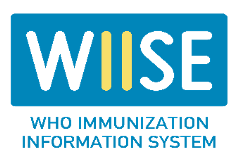Data, statistics and graphics
The WHO Immunization Data Portal: Providing access to important immunization data and insights
Navigate our comprehensive Immunization Data Portal to discover immunization data trends over time: https://www.who.int/data/immunization
Learn how to use the WHO Immunization Data portal here
The WHO Immunization data portal allows users to interact, visualize and download immunization data. Data sets can be visualized and downloaded fully or by various country groupings. See below an overview of how to access and download data for the immunization topics available on the portal:

Introduction and navigation of the portal [00:35 - 02:10]
- Where to access all immunization topics on the portal
- How to export all immunization data by topic
- Where to find featured data on dashboards
- How to use the compare data feature
- How to view comparisons of data in table and chart view and how to download data
Regional and country dashboards [02:10 - 03:06]
- How to view global, regional, and country dashboard profiles to drilldown to specific immunization data
Reported cases and incidence data [03:06 - 04:39]
- How to use the search feature
- How to view detailed data for via a table, chart, and map
- How to access and download reference data
- How to use the advanced filter to view data for different country groupings (i.e. WHO Regions, WB Income Status, ...)
Vaccination coverage [04:39 – 05:53]
- How to view detailed for all countries for specific antigens
- How to use the time range buttons
- How to download data tables, charts, maps and make data comparisons
Immunization programme indicators [05:53 – 06:54]
- How to view focused pages
- How to filter data by county or various countries at one time
Vaccine introduction [06:54 – 08:04]
- How to view data for specific countries or antigens
- How to access data in a table, timeline, and map overtime
Vaccine schedule [08:04 – 09:03]
- How to view data by country
- How to use the hide empty columns, zoom in and out, scheduler tooltips features
- How to download the data
Visit the WHO Immunization Data Portal to find global, regional and country summaries of vaccine-preventable disease reported cases and WHO/UNICEF Estimates of National Immunization Coverage (WUENIC). Other familiar datasets that are found on the new WHO Immunization Data dashboard include:
- Vaccine-preventable disease reported cases and incidence time series data
- Vaccination coverage data
- Official country reported coverage estimates time series
- Country reported administrative coverage time series
- WHO/UNICEF Human papillomavirus (HPV) vaccine coverage estimates
- WHO/UNICEF Estimates of National Immunization Coverage (WUENIC)
- Protection at birth (PAB) estimate
- Other programme indicators
- Catch-up vaccination data, Demand for immunization, Home-based records, Immunization financing, Influenza vaccination policy, Integrated services, Legal framework, Maternal and Neonatal Tetanus (NT) elimination, National Immunization Advisory Mechanism, New and underutilized vaccines introduction, Planning and management, Polio eradication, Safety, School-based vaccination, Vaccine supply and commodities, System performance, Vitamin A, Yellow Fever
- Vaccine introductions
- Year of introduction of selected vaccines by disease
- Introduction status of selected vaccines by country
- Vaccine scheduler
- Immunization schedules by disease covered by antigens within age range
- Reported immunization schedules by vaccine by country
Other immunization datasets are also now found on the WHO Immunization Data Portal such as:
- Provisional measles and rubella data
- COVID-19 Vaccination Insights Report
- Subnational immunization coverage
- Coverage survey data
- Polio case count data
- Resources for vaccine-preventable disease surveillance
- Summary of Measles-Rubella Supplementary Immunization Activities
WHO/UNICEF Estimates of National Immunization Coverage
Visit the WHO/UNICEF National Estimates of National Immunization Coverage (WUENIC) page for resources and access to the interactive and PDF country summaries and background materials updated annually mid-July.
